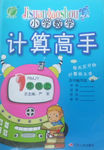题目内容
The definition of the standard kilogram is almost entirely wrong. Getting that definition right is a challenge that has tried the patience and intelligence of scientists for decades.
Scientists use just seven basic units to define all the other quantities we use — quantities such as speed or electric power. All of those basic units except the kilogram are themselves defined according to natural properties(属性)that are beyond human control.
For example, the standard second (time) is defined as a specific number of vibration(振动)of a type of radiation sent out by atoms of a special metal. The standard metre (length), in turn, is defined as the length of the path light travels under certain conditions.
Not so the kilogram. This orphan of the basic unit family is simply the mass of a small platinum-iridium alloy cylinder(铂—铱合金筒)locked away in a container maintained by the International Bureau of Weights & Measures in Sevres, France, near Paris. Official bodies around the world have copies of the cylinder.
Embarrassingly, the last time the copies were brought to Sevres for a checkup in the 1980s, officials found that some copies had gained about 20 parts per billion in weight compared to the master cylinder since the previous checkup in the 1940s. This implies that the master cylinder itself may be an inconstant standard.
Several efforts in several different countries are under way to redefine the kilogram according to basic physical quantities such as counting the actual number of atoms of a specific substance in a kilogram or the electromagnetic(电磁的)force that balances a kilogram mass against gravity. A project of the latter type at the laboratories in Gaithersburg, Md., hopes eventually to define mass by means of electrical units.
So far, none of these redefinition projects has borne fruit. They require the very accuracy of measurement and control of experimental conditions. The slightest influence — even a tiny change in weather — can ruin results. You’ve got to hand it to scientists who are willing to devote many years to such painstaking — but extremely important — research.
1. Compared with other basic units, the kilogram is ____.
A. as accurate as other basic units
B. not universally accepted in the world
C. not defined according to natural properties
D. defined in the same way as other basic units
2.The author introduced the examination of copies of a platinum-iridium alloy cylinder in the 1980s to indicate that ____.
A. the causes of weight changes had been found
B. such kind of checks had been carried out regularly
C. the changes in weight challenged the definition of the kilogram
D. the consequences of such changes were great in research
3. According to the passage, to define the weight of mass by means of electrical units ____.
A. is the only way to redefine the kilogram scientifically
B. has been accepted as the only possible redefinition project
C. is not as complicated as people understand
D. has been considered by some scientists as a better approach
4. Which of the following cannot be concluded from the passage?
A. Scientists will achieve success in redefining the kilogram in the near future
B. Some scientists are trying to redefine the kilogram according to basic physical quantities.
C. The redefining of the standard kilogram is quite complicated and can be affected by a number of factors.
D. A number of experiments are being carried out to redefine the kilogram.
1.C2.C3.D4.A
【解析】略

 智能训练练测考系列答案
智能训练练测考系列答案 计算高手系列答案
计算高手系列答案